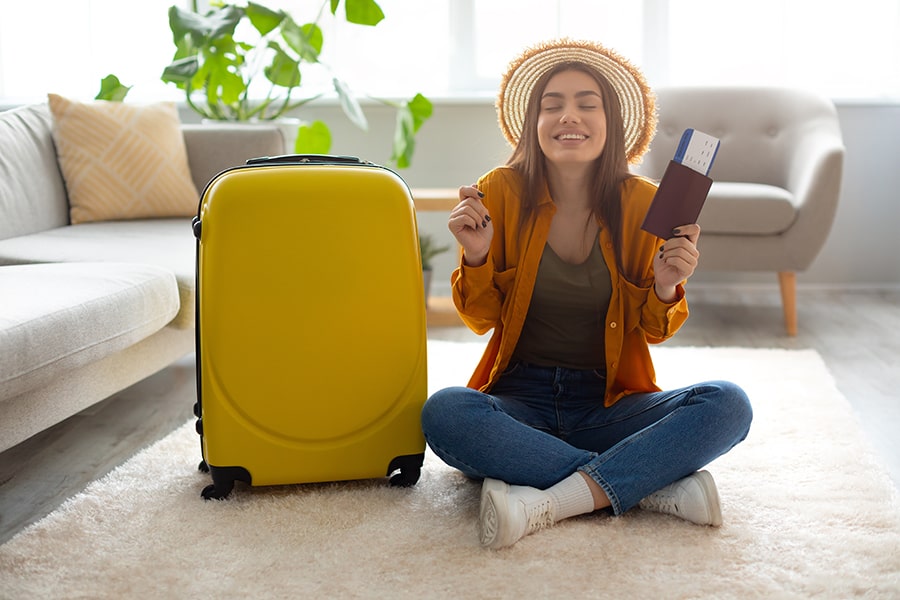Tips For Preventing Bed Bugs While Traveling
- Details

Bed bugs can spread easily in gathering areas and spaces where people sleep. Places with a high turnover of nighttime guests are particularly vulnerable to infestations. Since bed bugs tend to hide in bedding and clothes, accommodations when traveling can be a breeding ground for these pests.
Fortunately, professional bed bug treatments are available to effectively eliminate them. Bed bugs are preventable and you can significantly reduce the risk of exposure when away from home by practicing these easy-to-follow tips.
Know How to Identify Bed Bugs and Look Out for Signs
Bed bugs are small, reddish-brown insects that feed on the blood of humans and animals. They are usually found in areas where people sleep, such as beds, couches, and are known to inhabit luggage. Knowing the signs of bed bugs can help you avoid an infestation while traveling.
- Look for small, rust-colored stains. If you see marks or stains on bed sheets, pillows, or mattresses, it could be a result of bed bug activity. You might also notice tiny, dark spots of bed bug excrement or small, white eggs and tiny egg casings. Check areas around peeling wallpaper, behind pictures, seams of mattresses and curtains.
- If you notice bites on your skin, it could be due to bed bug activity. Bites from bed bugs often appear as small, red, itchy bumps, usually in a line or cluster on the skin.
- Be aware of a musky or stale smell. Bed bug infestations can result in a distinct smell due to their habits of feeding on blood and fecal droppings. If you are noticing an unusual odor near furniture or bedding, it could be from bed bugs.
Since bites from bed bugs can take some time to appear after exposure, it’s important to know the signs of bed bugs and recognize the evidence they leave behind on mattresses, furniture, and linens. You may not see the bugs moving around as they stay hidden, but they will typically show signs in their hiding spaces and feeding grounds.
Do a Quick Inspection of Your Room
Before settling in, take a few minutes to inspect the space for bed bugs. Start by examining the bed, including the mattress seams, the headboard, and the bed frame. Use a flashlight to get a better look at the crevices and dark corners where bed bugs hide. Don't forget to check furniture, such as couches, chairs, and dressers.
If you see any evidence of bed bugs in or around your clothing or anywhere in the area during your stay, act swiftly and notify management. If you believe you’ve been exposed, wash and dry your clothing and seal your suitcase in a plastic bag to prevent further infestations.
Take Precautions with Luggage and Clothing
Use hard-sided suitcases, which are less likely to harbor bed bugs than soft-sided luggage. Keep your luggage off the floor and away from the bed by using a rack or placing it on a countertop surface. Avoid using dressers and nightstands for clothing and personal items.
Consider using protective covers for your suitcase and packing your belongings in sealed plastic bags. This can create an additional barrier against bed bugs and make it more difficult for them to get on your clothes and other items. To prevent bed bugs from hitching a ride back with you, take measures to protect your belongings and avoid exposing your home.
When you return home, “quarantine” your luggage. Place it in an isolated space, such as a garage in an air-tight plastic bag to ensure it’s not contaminated. Immediately wash and dry all clothing on high heat. Inspect your luggage for any signs of bed bugs and seek professional pest services immediately if you suspect an infestation.
Pest Services For Bed Bug Inspection and Treatment
If you see signs of bed bugs, it’s crucial to seek bed bug treatment as soon as possible. Contact Eagle Pest Services at (866) 281-1822 or complete our pest services form to schedule an estimate or inspection. Our expertly trained pest control technicians are equipped with the knowledge and experience to handle all of your pest concerns.





